Unlock your creative potential with our comprehensive guide to game art tutorials. Discover the essential tools, techniques, and resources needed to excel in 2D game art. Whether you’re a beginner or an experienced artist, this guide offers valuable insights into the world of game art, including top software recommendations, free tutorials, and career advice. Elevate your skills today!
Key Takeaways
– Understand the distinction between game design and game art to grasp their unique roles in game development.
– Explore various types of game art, from 2D styles like pixel art and vector art to 3D options such as realistic and cyberpunk designs.
– Discover the salary potential for game designers, with entry-level positions ranging from $60,000 to $80,000 annually and senior roles earning upwards of $100,000 to $150,000.
– Utilize additional resources like indie dev tutorials and discussion forums to enhance your learning journey in game art.
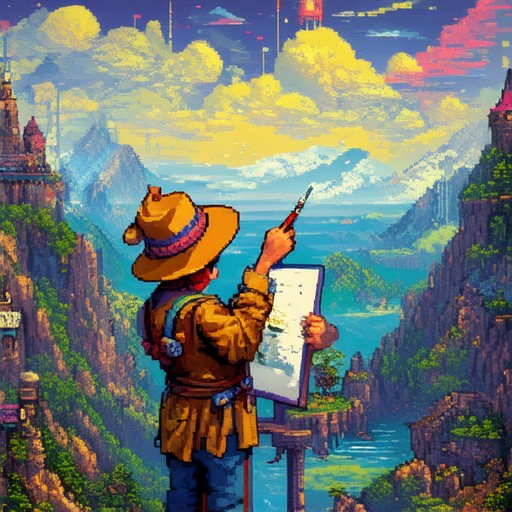
Getting Started in Game Art
Starting in game art can be an exciting journey, but it requires dedication and the right approach. Here’s a step-by-step guide to help you get began:
1. Choose Your Tools
Before diving in, select the tools that align with your artistic style and project goals. Popular options include:
- GameMaker : Ideal for 2D games, offering a user-friendly interface for creating visuals.
- Blender : A powerful tool for 3D modeling, great for concept art and environment design.
- Adobe Photoshop : A industry-standard choice for creating high-quality textures and character designs.
- Krita : Perfect for digital painting and concept art.
2. Learn the Basics
Mastering the fundamentals is crucial. Start with:
- Drawing Skills : Practice traditional drawing techniques to develop a strong foundation.
- Color Theory : Understand how colors work together to create mood and atmosphere.
- Composition : Learn how to arrange elements effectively within a frame.
- Proportion and Perspective : Essential for creating realistic characters and environments.
3. Explore Different Art Styles
Game art often blends various styles. Experiment with:
- Concept Art : Create rough sketches to visualize your ideas.
- Environment Design : Focus on background elements that immerse players.
- Character Design : Develop unique characters that stand out.
- UI/UX Design : Design interfaces that are intuitive and visually appealing.
4. Join Communities
Surround yourself with supportive peers and resources:
- Indie Dev Games : A hub for tutorials, reviews, and tips for indie game developers. Explore their website .
- Art Stations : Connect with artists, share your work, and discover inspiration. Visit their platform .
- YouTube Tutorials : Channels like PS4Tutorials offer valuable video guides.
- Forums and Discord Groups : Engage with communities like TIGSource and Discord Gaming Artists Group .
5. Stay Updated and Inspired
Keep your skills sharp by following leading artists and staying informed:
- Follow Artists on Social Media : Platforms like Instagram and Behance showcase diverse styles and projects.
- Subscribe to Newsletters : Sign up for updates on game development trends and resources.
- Attend Conferences : Events like GDC and PAX provide insights and networking opportunities.
6. Practice Regularly
Consistency is key. Dedicate time daily to work on your craft, whether it’s sketching, modeling, or concept art.
7. Collaborate and Iterate
Work with others to gain feedback and refine your work. Embrace criticism as a way to grow.
By following these steps and leveraging the right resources, you’ll be well on your way to mastering game art and contributing to exciting projects.
What is the salary of a game art artist?
The salary of a game art artist varies widely depending on factors such as experience, location, and the type of employer. According to recent data:
- Average Salary Range: $79,000 (25th percentile) to $170,500 (75th percentile)
- Entry-Level Positions: Typically range between $45,000 and $70,000 annually
- Mid-Career Artists: Often earn between $80,000 and $120,000 per year
- Senior Artists: Can command salaries ranging from $120,000 to $200,000+ depending on experience and reputation
Factors influencing salary include location (higher salaries are often found in major cities like San Francisco, Los Angeles, or New York), the size of the company (larger studios may offer higher pay), and the artist’s portfolio strength and demand in the market.
For more information on game art careers and resources, visit our Indie Dev Games platform.
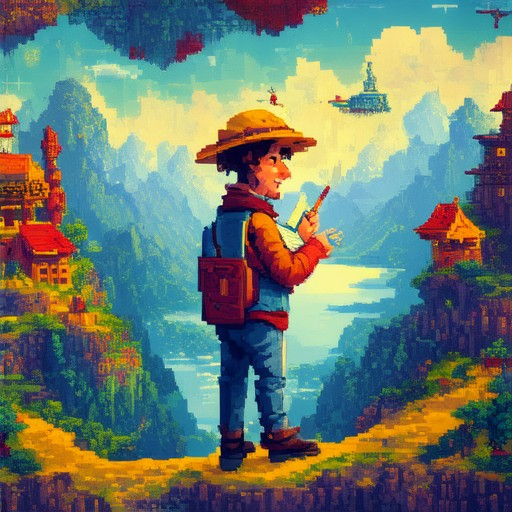
Programs Used by Game Artists
Game artists utilize a variety of specialized tools to bring their creative visions to life. Below is a breakdown of the primary programs and software used across different aspects of game art creation:
- 2D Art Tools
- Adobe Photoshop – A cornerstone for 2D digital painting, concept art, and texture creation.
- Procreate – Popular among iPad users for digital painting and sketching.
- Krita – An open-source alternative for digital artists, ideal for concept art and detailed illustrations.
- Toon Boom Harmony – Used extensively for comic book-style 2D animation and character design.
- 3D Modeling & Sculpting
- Blender – A free, open-source 3D modeling and animation tool favored by indie developers.
- Maya – A professional-grade 3D modeling and animation software used in the gaming industry.
- 3ds Max – Another industry-standard tool for 3D modeling, texturing, and asset creation.
- ZBrush – A digital sculpting tool used for creating detailed 3D models and characters.
- Game Engines
- Unity – A versatile game engine popular for 2D and 3D game development.
- Unreal Engine – Known for its photorealistic rendering and used widely in AAA game development.
- Texture Painting & Asset Creation
- Substance Painter – Specialized for texture painting and asset creation.
- Quixel Mapper – A tool for creating high-quality textures and asset maps.
- Concept Art Tools
- Procreate – Excellent for sketching and concept art on iPad.
- Sketchbook – A digital sketching app with a focus on simplicity and creativity.
- Conceptual – A digital canvas for brainstorming and developing concepts.
- Video Editing & Storytelling
- Clipchamp – A video editing tool that supports storyboarding and pre-production.
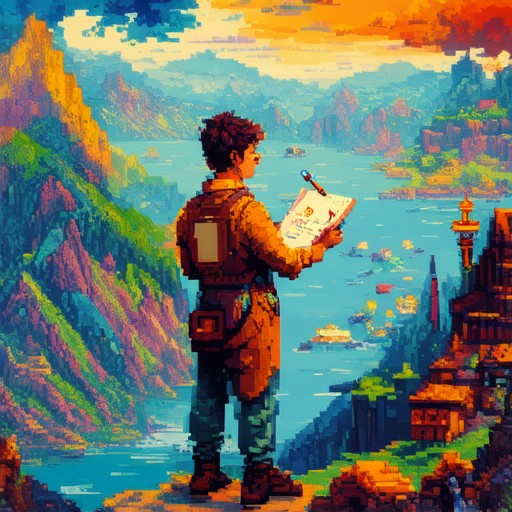
What’s the Difference Between Game Design and Game Art?
Game design and game art are two crucial components of video game development, but they serve distinct purposes and require different skill sets. Understanding the difference between them can help you appreciate the complexity of creating a successful game.
Comparison Table
| Aspect | Game Design | Game Art |
|---|---|---|
| Focus | Rules, mechanics, and structure | Visuals, aesthetics, and style |
| Creation Process | Designers focus on systems and gameplay | Artists focus on creating visuals and atmosphere |
| Role | Designers, programmers, and producers | Artists, illustrators, and concept artists |
| Involvement | Throughout development | Throughout development |
Detailed Explanation
Game design encompasses the creation of the game’s core mechanics, rules, and overall structure. This includes:
- Game Mechanics: Everything players interact with, such as movement, combat, and scoring systems.
- Level Design: How levels are laid out, puzzles are created, and environments are constructed.
- Interface Design: The layout and functionality of menus, HUDs, and UI elements.
- Balancing: Ensuring fairness and enjoyment through careful tuning of mechanics.
On the other hand, game art focuses on creating visually appealing and immersive experiences. This involves:
- Character Design: Creating unique characters, enemies, and allies.
- Environment Design: Crafting detailed worlds, landscapes, and settings.
- Visual Style: Establishing a cohesive look through color schemes, textures, and lighting.
- Storytelling Through Art: Using visuals to convey themes, emotions, and narratives.
Additional Resources
- Indie Dev Games – Game Design Tutorials
- Indie Dev Games – Game Art Articles
- Discussions on Game Design vs. Game Art
Types of Game Art
There are numerous types of game art, each catering to different artistic styles and genres. Here’s a breakdown of the primary categories:
2D Game Art
- Pixel Art : Highly detailed artwork created using individual pixels, often seen in classic games and modern indie titles.
- Stylized Art : Unique and distinctive art styles, such as anime, comic book, or cartoon aesthetics.
- Vector Art : Clean and scalable graphics using lines and curves, ideal for 2D games.
- Watercolor Art : A painterly style that mimics watercolor brushstrokes, adding a vibrant touch.
- Chibi Art : Simplified, cute, and exaggerated character designs, commonly found in Japanese media.
- Low-Poly Art : Uses simple geometric shapes to create visually appealing yet less detailed characters and environments.
- Hand-Drawn Art : Personal and organic art created by hand, often in indie games.
- Calligraphic Art : Elegant and stylized lettering and symbols, giving a traditional aesthetic.
- Isometric Art : A 3D-style projection used in strategy and role-playing games.
- Flat Art : Features bold, flat colors without shadows or depth, popular in modern games.
3D Game Art
- Realistic Art : Lifelike characters and environments, often seen in AAA games.
- Semi-Realistic Art : Blends realism with stylization, common in fantasy and sci-fi games.
- Cyberpunk Art : Futuristic and gritty designs with neon accents and tech elements.
- Fantasy Art : Imaginary creatures and settings dominated by magic and wonder.
- Steampunk Art : Combines Victorian-era machinery with advanced technology.
- Minimalist Art : Clean and simple designs focusing on functionality and aesthetics.
- Pixelated 3D Art : Low-resolution 3D models with a retro feel.
- Procedural Generated Art : Created via algorithms, often used in procedural generation techniques.
- Pencil Sketch Art : Rough, hand-drawn textures, typical in concept art.
- Concept Art : Exploratory and rough sketches used during the creative process.
- Digital Painting : Merges traditional and digital mediums for detailed visuals.
Each style offers unique visual experiences, influencing everything from character design to environment creation, and plays a crucial role in shaping a game’s identity.
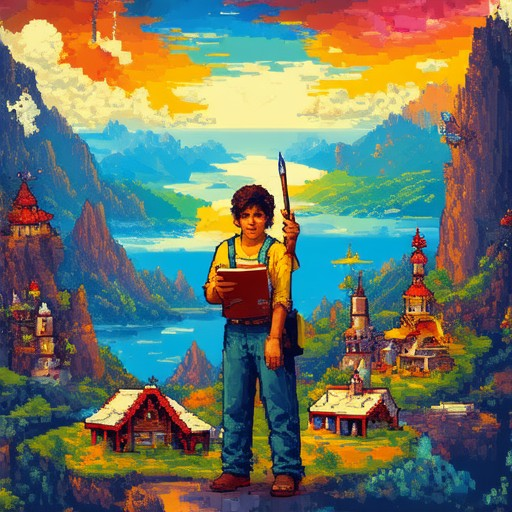
How Much Do Game Designers Make?
Game designers play a pivotal role in the creation of video games, responsible for designing gameplay mechanics, levels, characters, and narratives. Their compensation varies based on several factors, including experience, location, and the type of employer.
Salary Overview
- Entry-Level: Typically ranges from $60,000 to $80,000 annually.
- Mid-Level: Often increases to between $80,000 and $100,000.
- Senior-Level: Can reach upwards of $100,000 to $150,000, depending on experience and contributions.
Regional Differences
Salaries may vary significantly by region. In North America, the average annual wage for game designers is approximately $70,000 to $110,000. In Europe and Asia, particularly in countries with high costs of living, salaries tend to be higher.
Freelance vs Full-Time
Freelance game designers may earn higher rates, often ranging from $50 to $200 per hour, depending on expertise and demand. Full-time positions at established studios usually come with competitive benefits and salary packages.
Advancement Tips
To increase earning potential, consider: – Gaining experience through internships or collaborative projects. – Building a strong portfolio showcasing diverse skills. – Pursuing advanced education or certifications in game design. – Actively networking within the industry through online communities and events.
Conclusion
Game designers enjoy a range of career paths and financial opportunities, with salaries reflecting their critical role in the entertainment industry. By continuously developing skills and seeking growth opportunities, professionals in this field can maximize their earning potential.

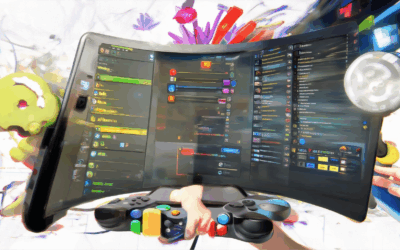
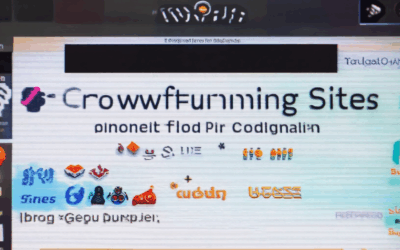

0 Comments